Steven F. Udvar-Hazy Center; Fairfax County, Virginia, USA (January 2007)
The Smithsonian’s Udvar-Hazy Center provides extra room for much of their extensive aircraft and spacecraft that cannot fit into their location on the National Mall in Washington, DC. The center sits about 25 miles west of the city on the grounds of Washington-Dulles International Airport (map).
Curtiss P-40E Warhawk/Kittyhawk
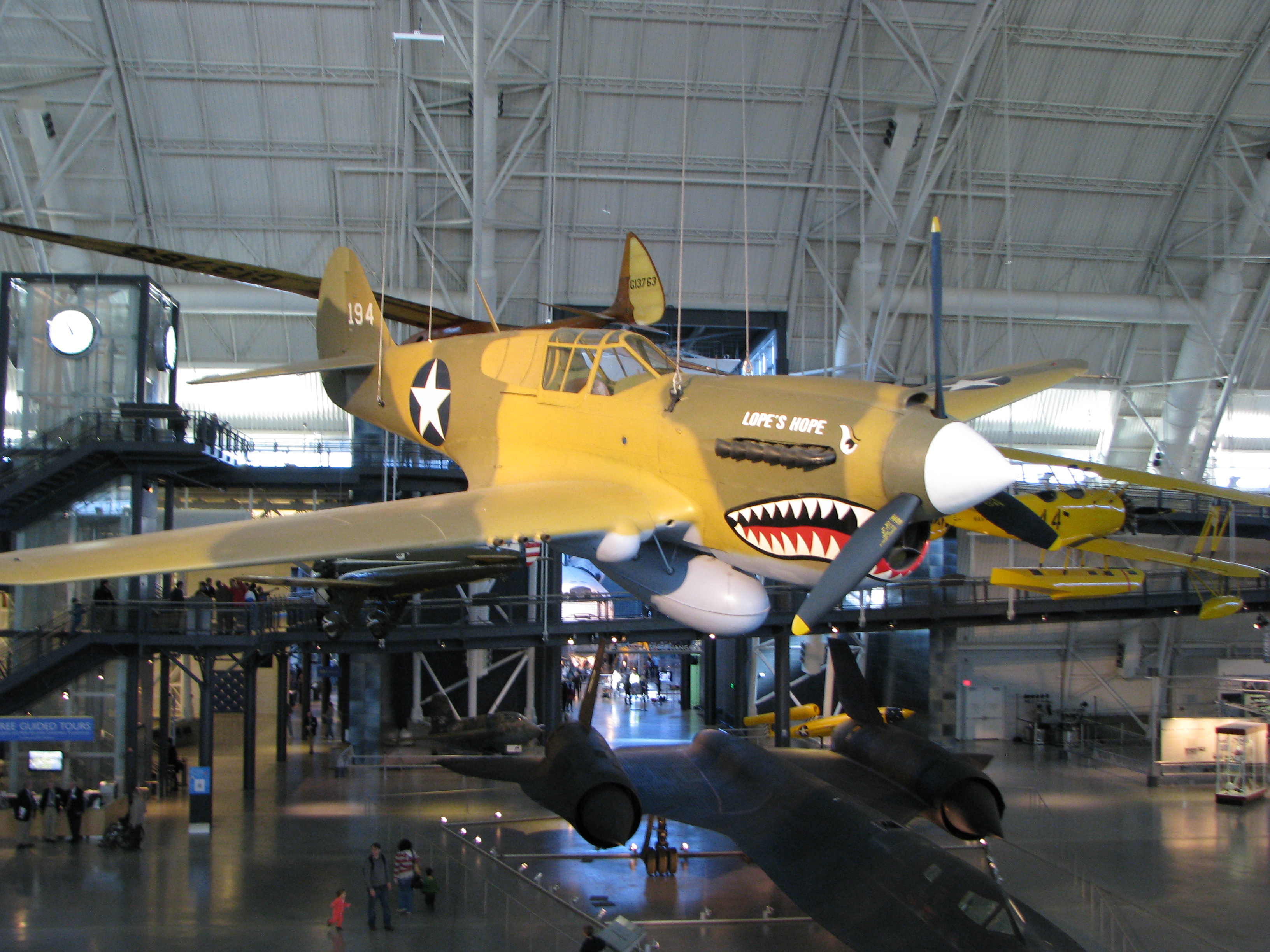
This shark-toothed Curtiss P-40 aircraft built in Buffalo, NY displays the colors of an American World War II fighter called the Warhawk. This one actually belonged to the Royal Canadian Air Force (RCAF) during the war so it would have been known as a Kittyhawk. The British flew a version called the Tomahawk. This particular airplane belonged to a Canadian squadron that moved to Alaska to help defend the Aleutian Islands.
Boeing-Stearman N2S-5 Kaydet
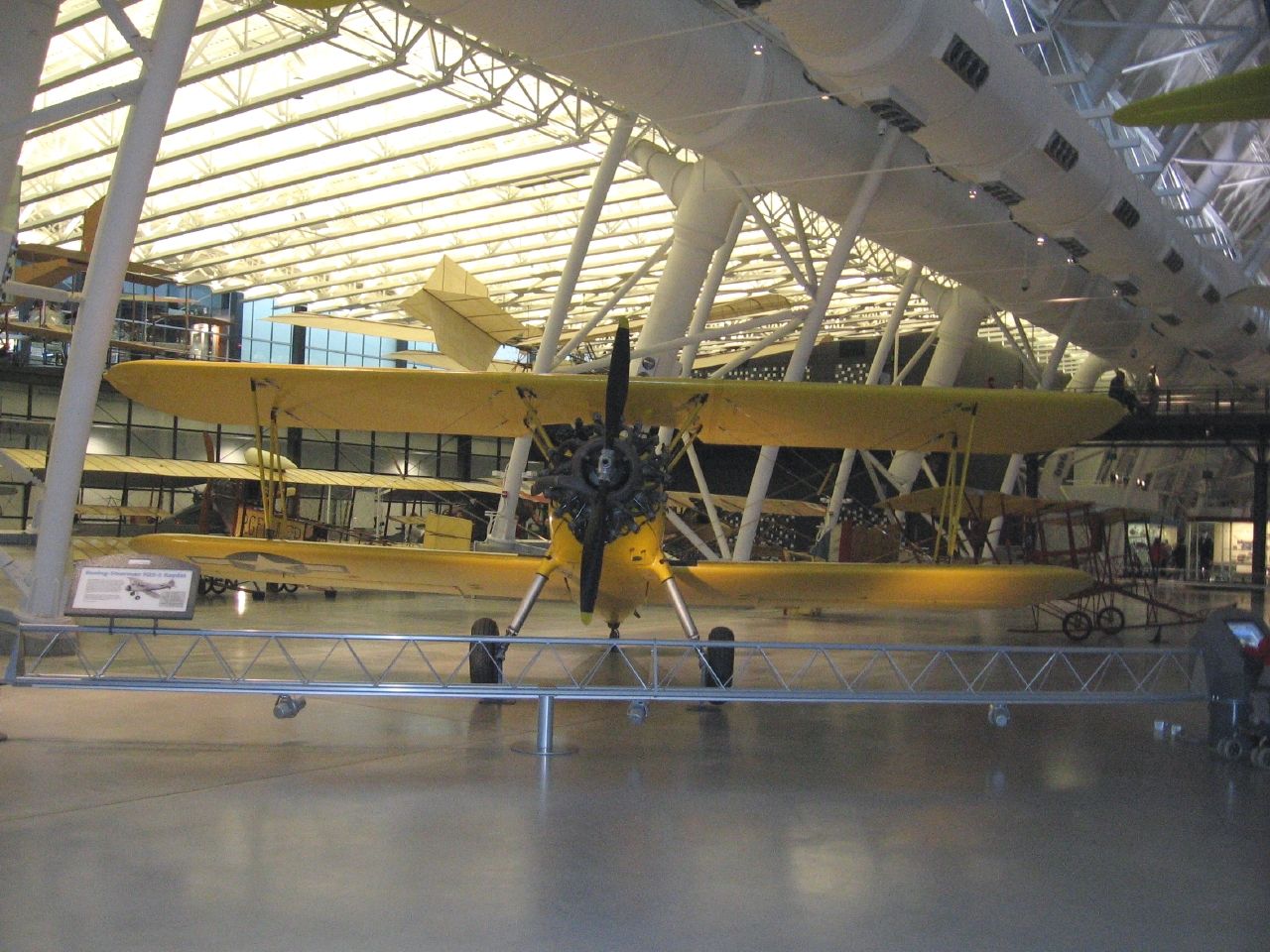
Nearly every American pilot of World War II developed basic flying skills using the Stearman, an open-cockpit biplane developed in the 1930’s. This specific airplane served during the war at the Naval Air Station in Ottumwa, Iowa.
Westland Lysander IIIA
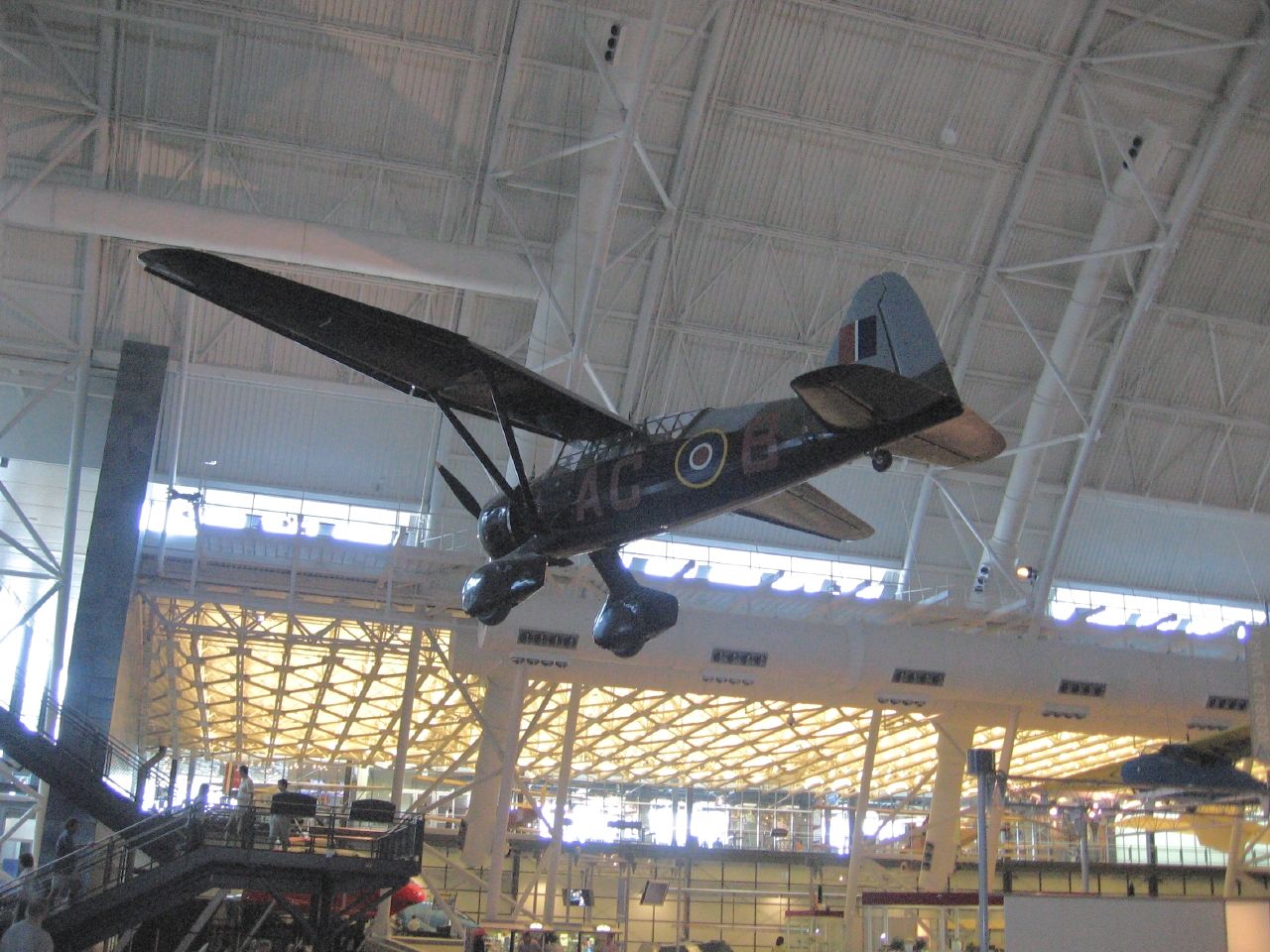
The Westland Lysander IIIA could take off and land in places not normally considered runways. They specialized in covert operations during World War II such as picking up and dropping off secret agents behind enemy lines. The Canadians built this particular model in 1942 but historians don’t know how they used it during the war.
Boeing B-29 Superfortress Enola Gay
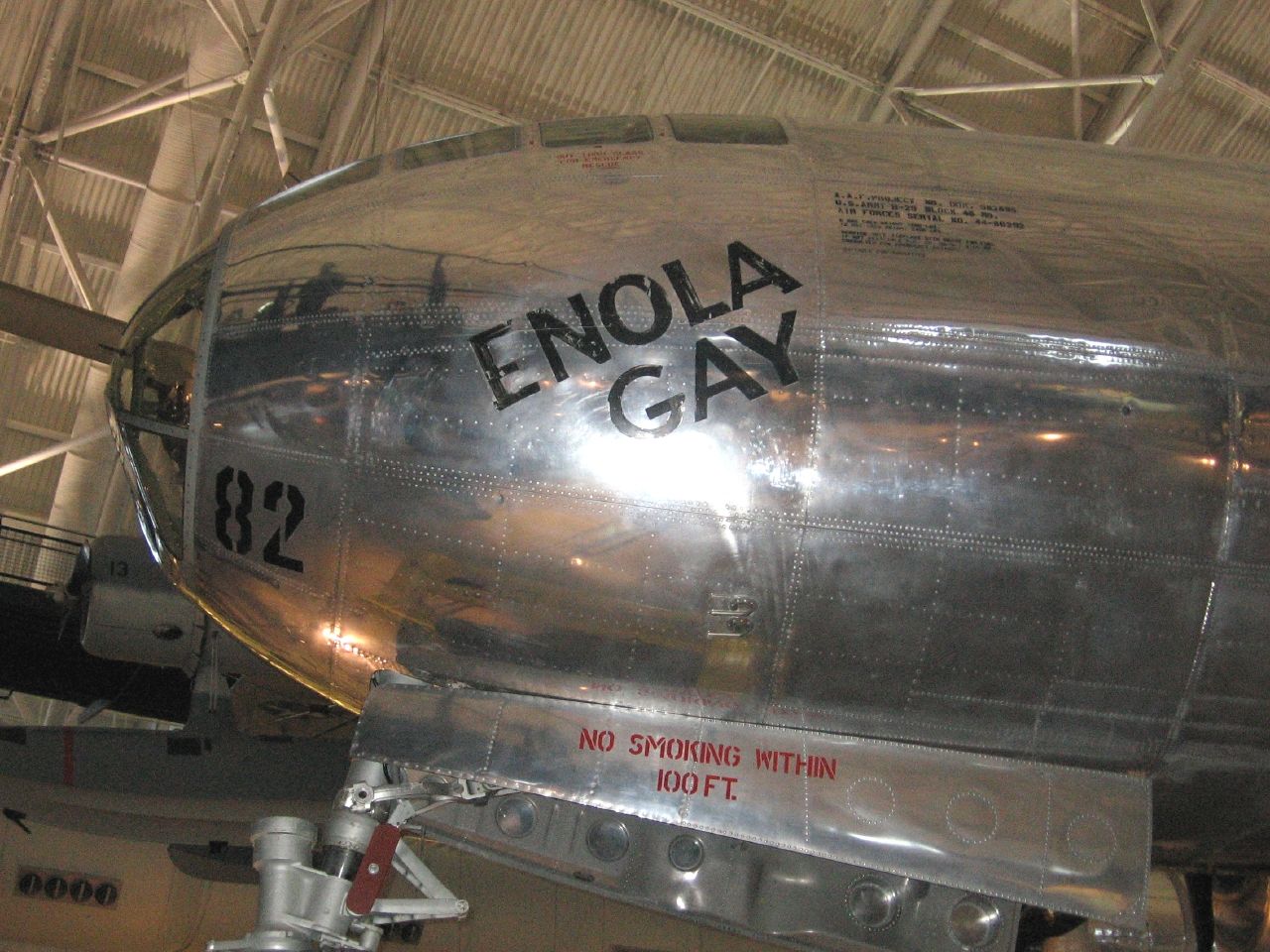
The Enola Gay became one of the most famous and controversial aircraft in history. A crew flew this airplane over Hiroshima on August 6, 1945 and dropped an atomic bomb on the city, contributing to the unconditional surrender of the Japanese several days later. The Enola Gay began its service in July 1945 from the Martin plant in Omaha, Nebraska. Possession transferred to the Smithsonian Institution in 1949. It remained in storage for decades afterwards. The Smithsonian placed the Enola Gay on public display only recently after undergoing a lengthy, multi-year restoration.
Grumman G-22 Gulfhawk II
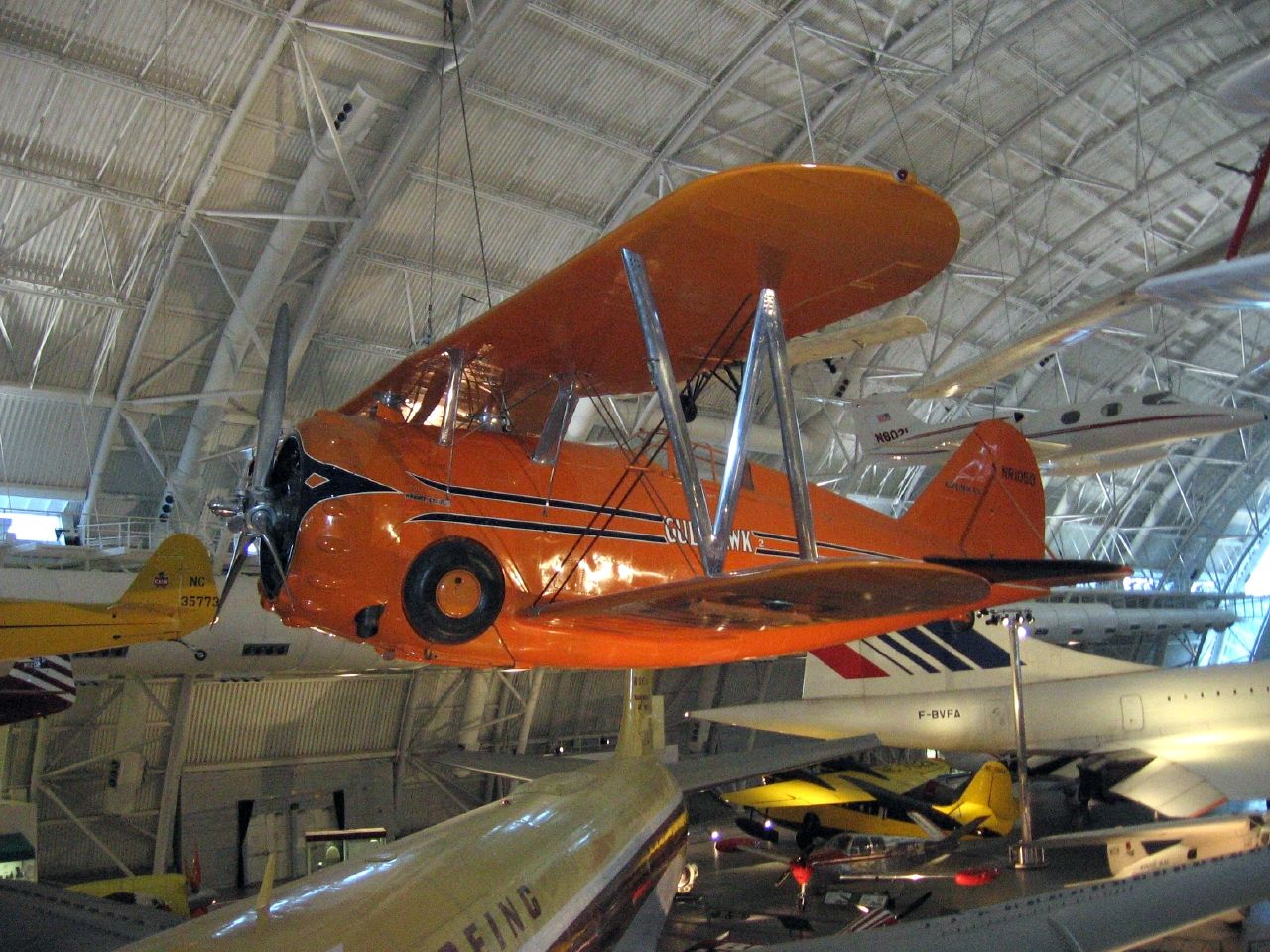
Grumman designed the G-22 Gulfhawk II as an acrobatic aircraft for the Gulf Oil Companies in 1936. It delighted spectators at air shows across the United States and throughout Europe up through 1948. Notice the unusual way the wheels retract into the fuselage.
Sharp DR 90 “Nemesis”
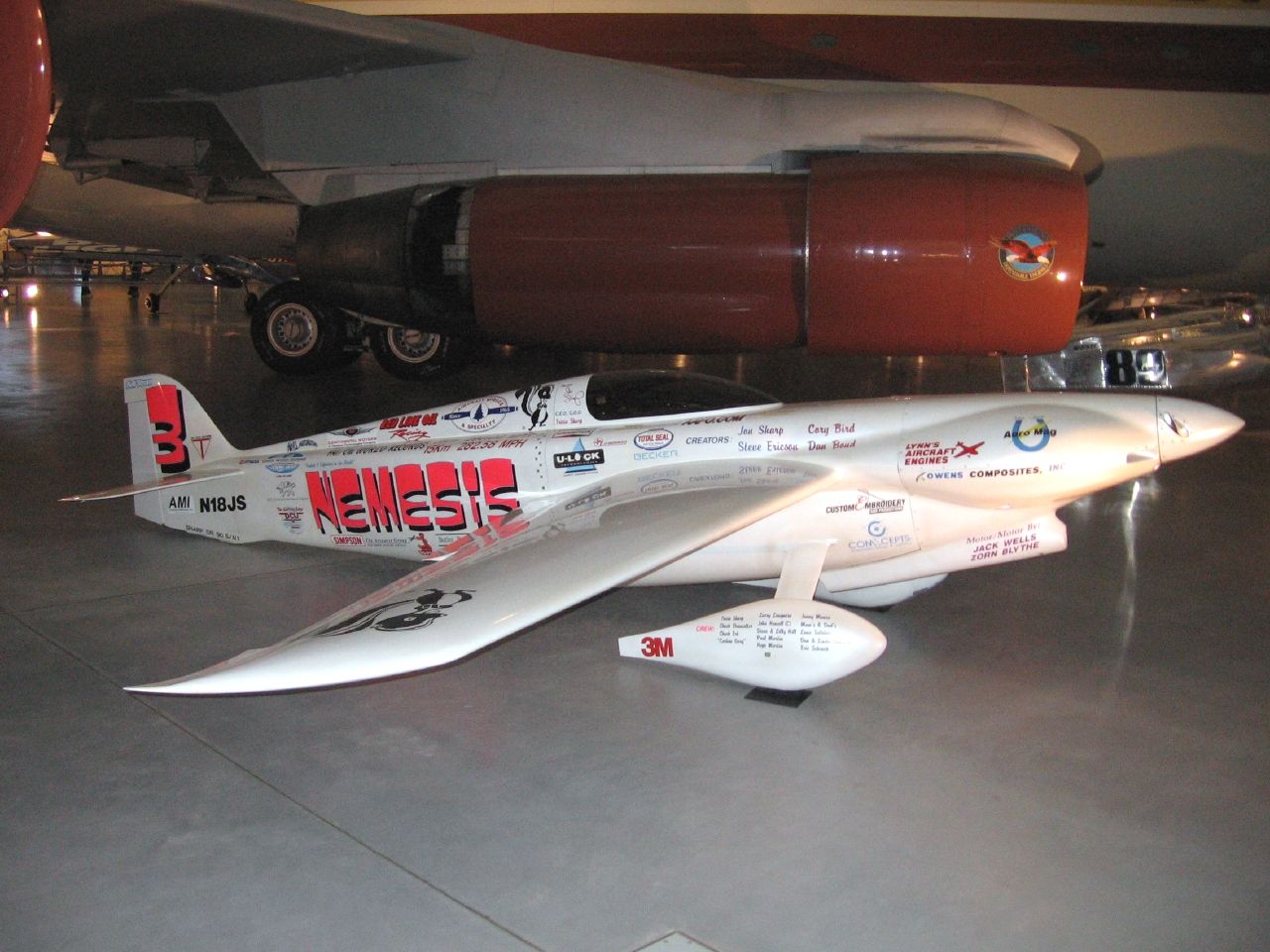
This sleek little airplane won 45 of 48 contests, retiring in 1999 as the most successful racer in history. Jon Sharp designed and flew it, setting new world speed records for class C-la (Group 1) aircraft on a 3 kilometer course. To gain a perspective of its diminutive size, note the engine of the Boeing 367-80 “Dash 80” in the background.
Monnett Moni

Some people like to build their own airplanes. Hobbyists could assemble the Monnett Moni from a kit sold by John Monnett during the early 1980’s, using common shop tools. He designed it to be both fun and economical. I’m not sure I’d ever trust my skills enough to build one myself, though.
Lockheed SR-71A Blackbird
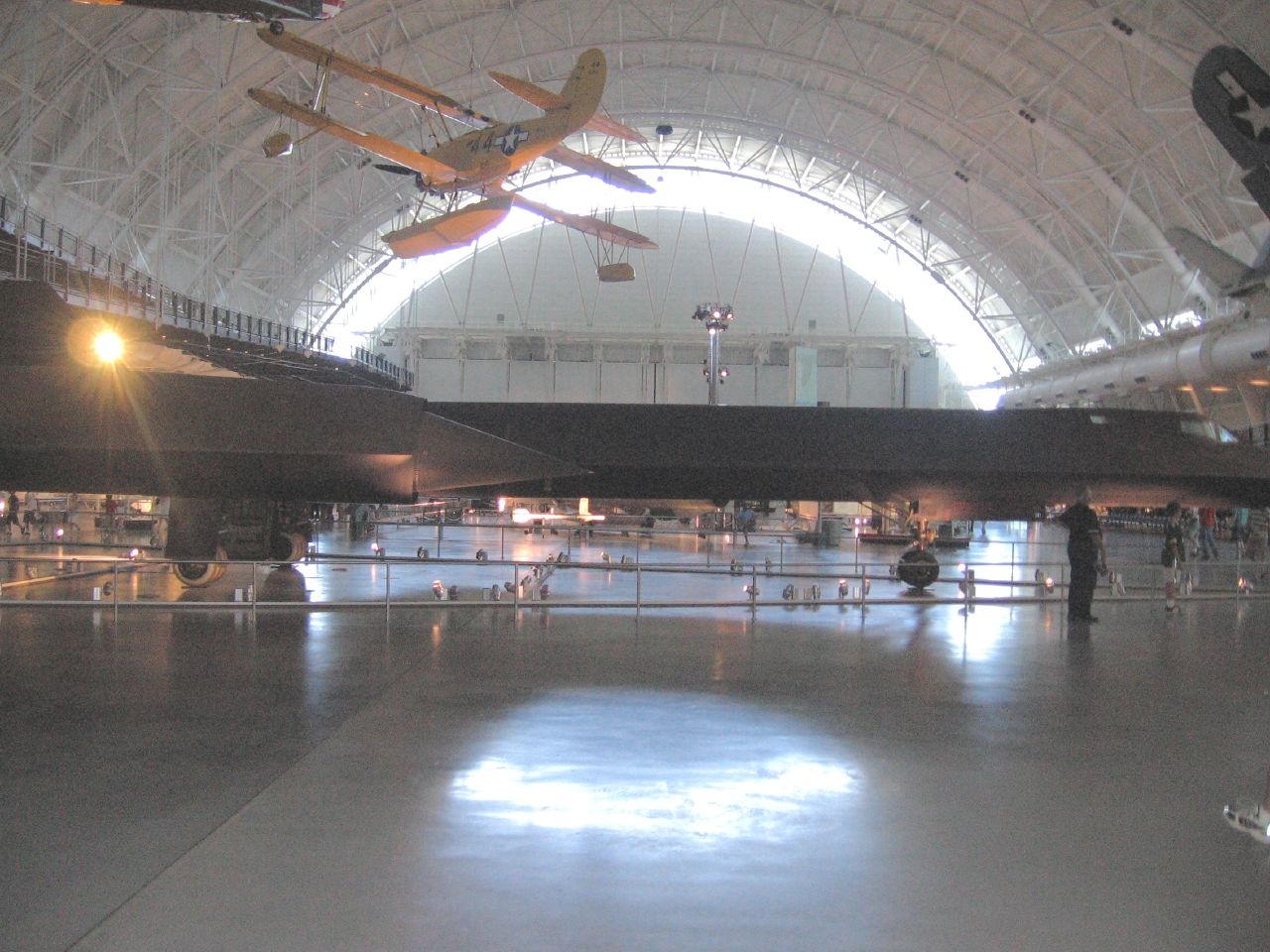
Blackbirds, named for the specially-designed dark radar-absorbing paint, provided reconnaissance over hostile territory during the Cold War. This SR-71 Blackbird logged 2,801 hours of flight time over its 24 year Air Force career before being delivered to the Smithsonian.
Space Shuttle Enterprise
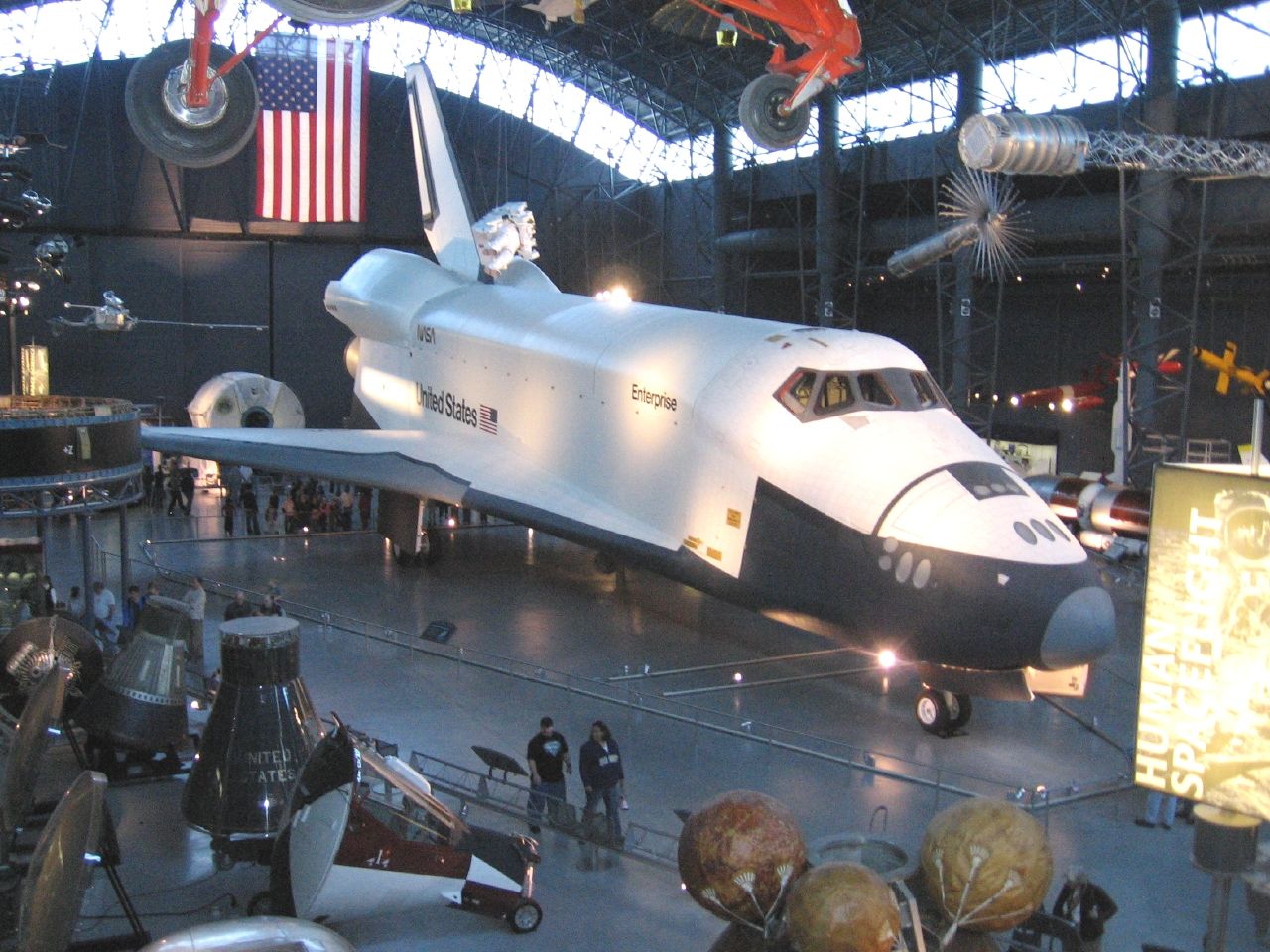
This very first Space Shuttle, the Enterprise, never traveled into space. NASA never intended it for this purpose. Rather, they used it to test the Shuttle’s ability to maneuver within the Earth’s atmosphere, specifically to determine how it would perform during approaches and landings.
UPDATE: The Space Shuttle “Discovery” — which actually flew in space — replaced the Enterprise in 2012. The Enterprise can now be found at the Intrepid Sea, Air & Space Museum in New York City.
Mars Sojourner Rover Model
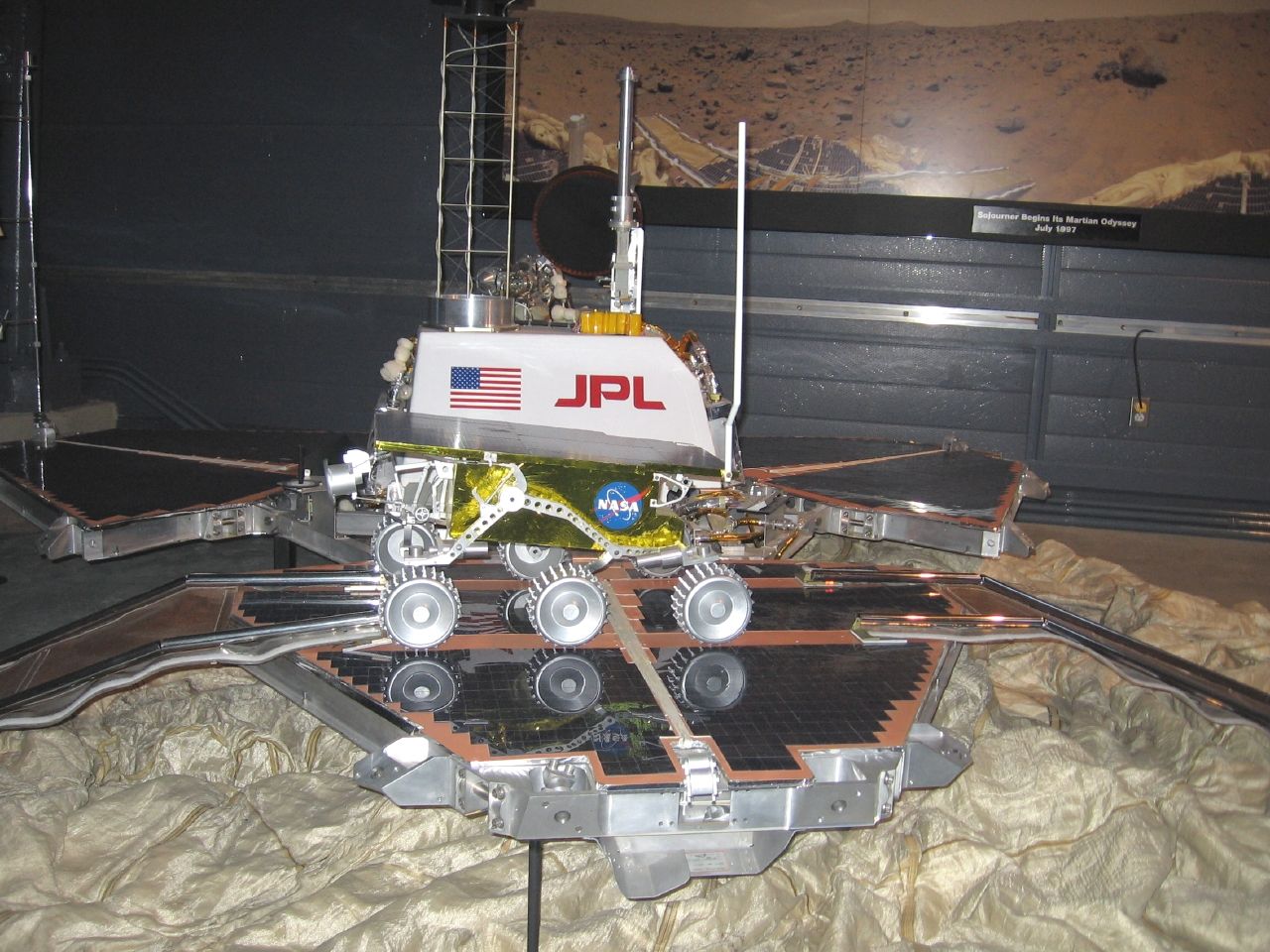
The Smithsonian’s Udvar-Hazy Center contains a model of the Mars Sojourner Rover circa 1997. In this display, Mars Pathfinder has deflated its airbags after successfully parachuting and bouncing to the surface. It has just opened to reveal the Sojourner Rover ready to explore the surface of the red planet. A photograph from the actual Mars Pathfinder mission in the background shows the scenery that appeared as the Sojourner prepared to roll away from its base.
Air and Space Wall of Honor
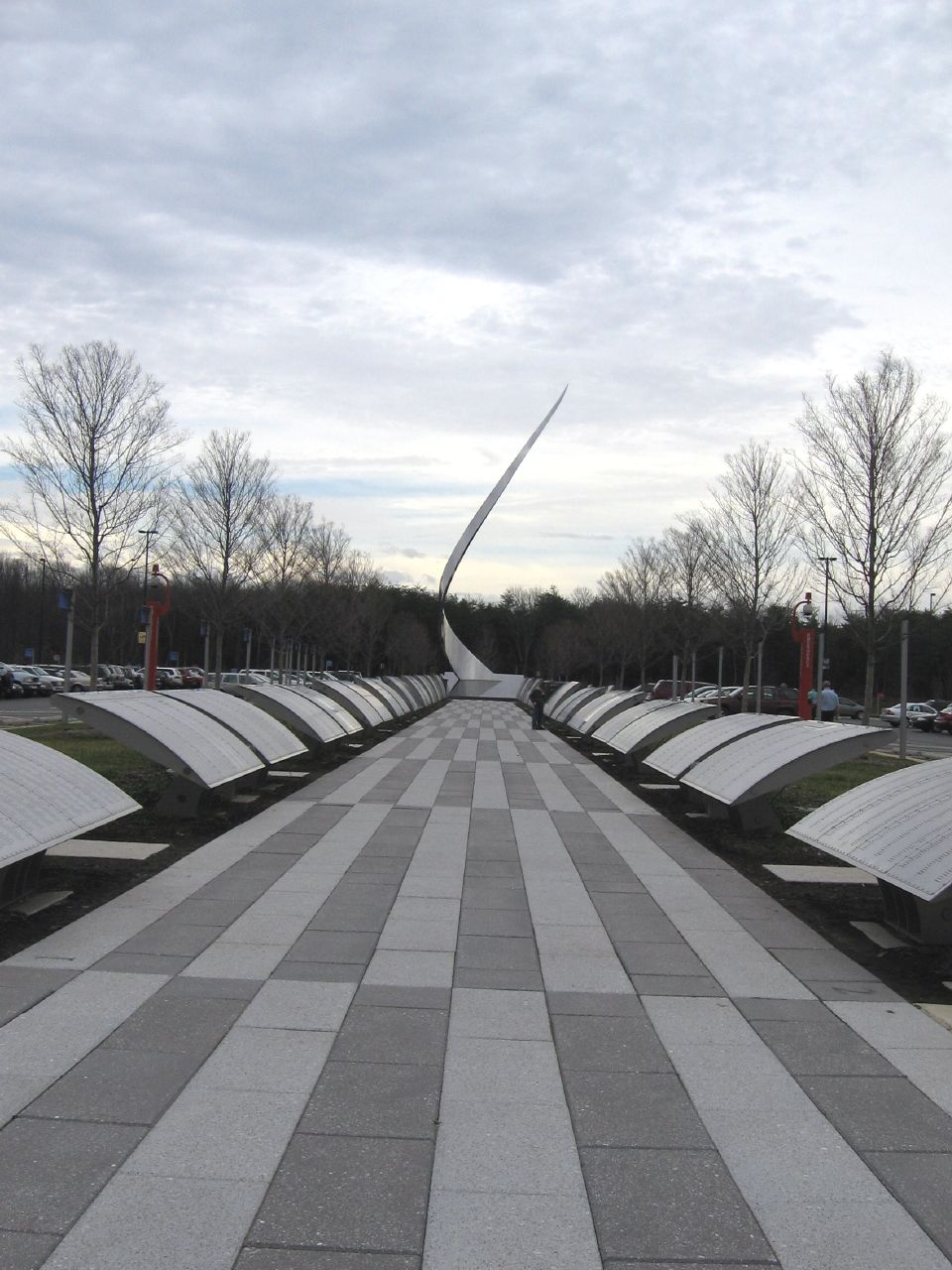
This walkway extends from the entrance of the Smithsonian’s Udvar-Hazy Center. It looks much like an airstrip or the deck of an aircraft carrier. The sculpture at the far end invokes the contrail of a jet as it arcs into the sky. The objects on either side take the form of wing flaps, and contain the engraved names of aviation pioneers, heroes, and supporters. The museum designates this the Wall of Honor.
Washington-Dulles International Airport
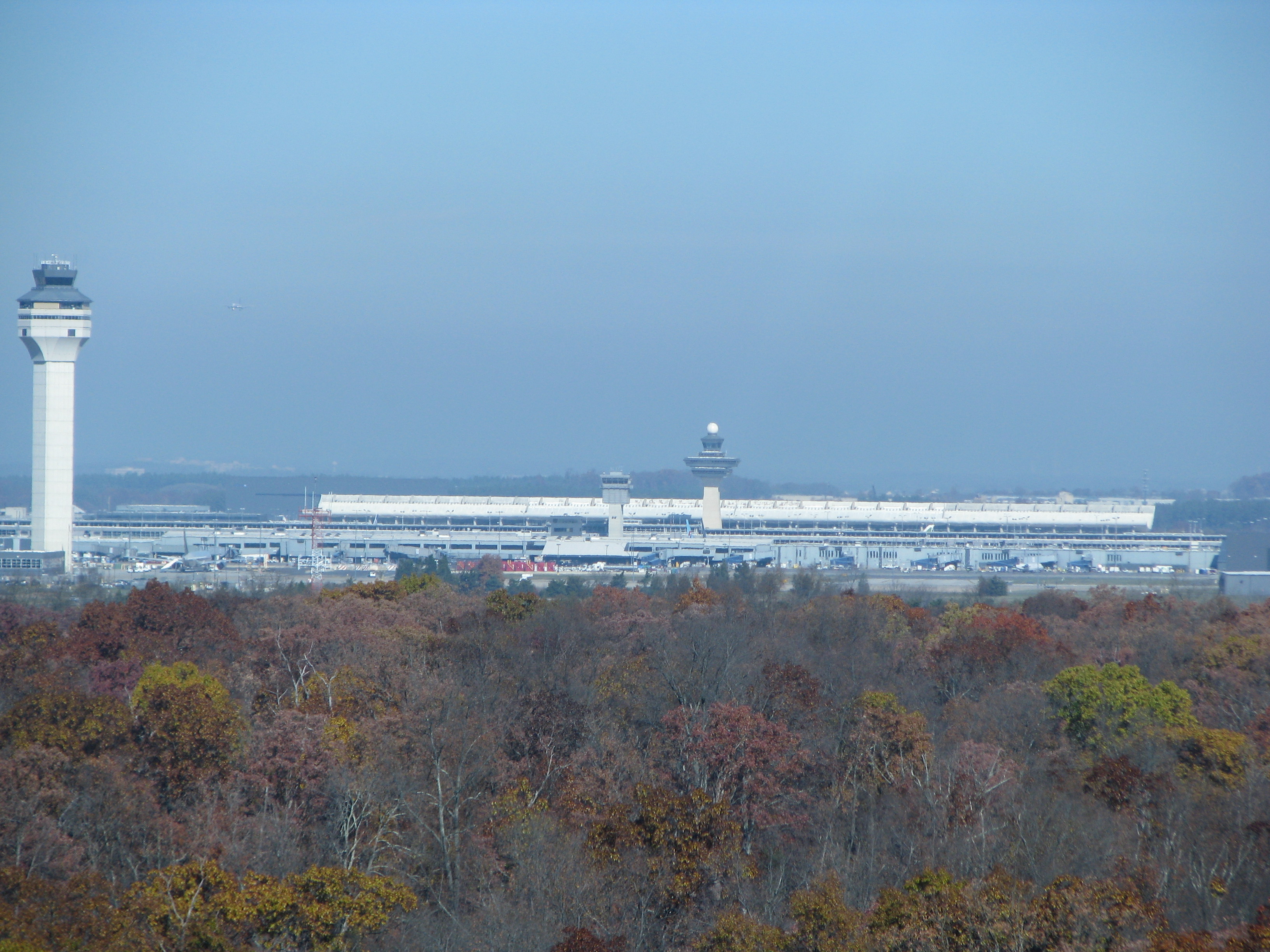
The Steven F. Udvar-Hazy Center includes a great bonus feature, a mock control tower. Visitors can ride an elevator up to the top of the tower for 360-degree panoramic views of the surrounding countryside. Washington-Dulles airport appears nearby. The Center practically lines up with one of the runways so visitors can watch jets fly by on their way to and from the airport.
Interestingly, while the Udvar-Hazy Center sits in Virginia’s Fairfax County, the nearby control tower and terminal for Washington-Dulles International Airport lays across the border in neighboring Loudoun County.

Leave a Reply